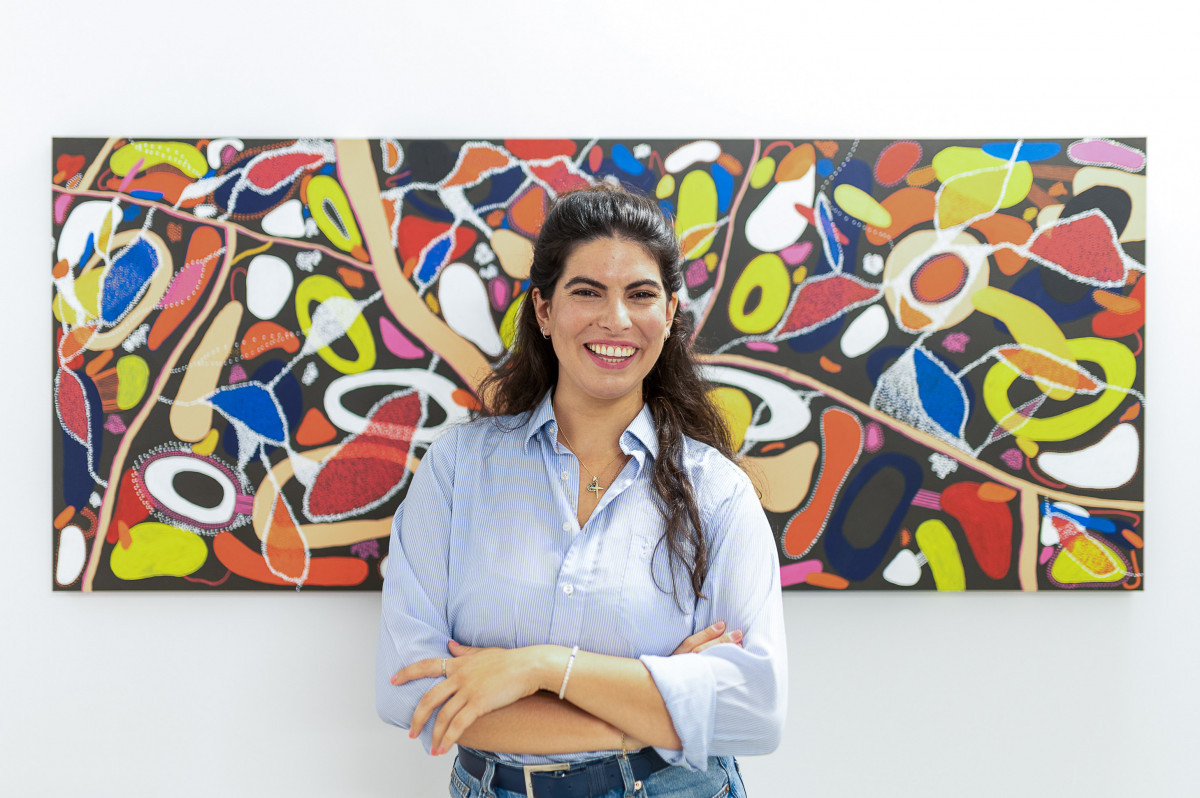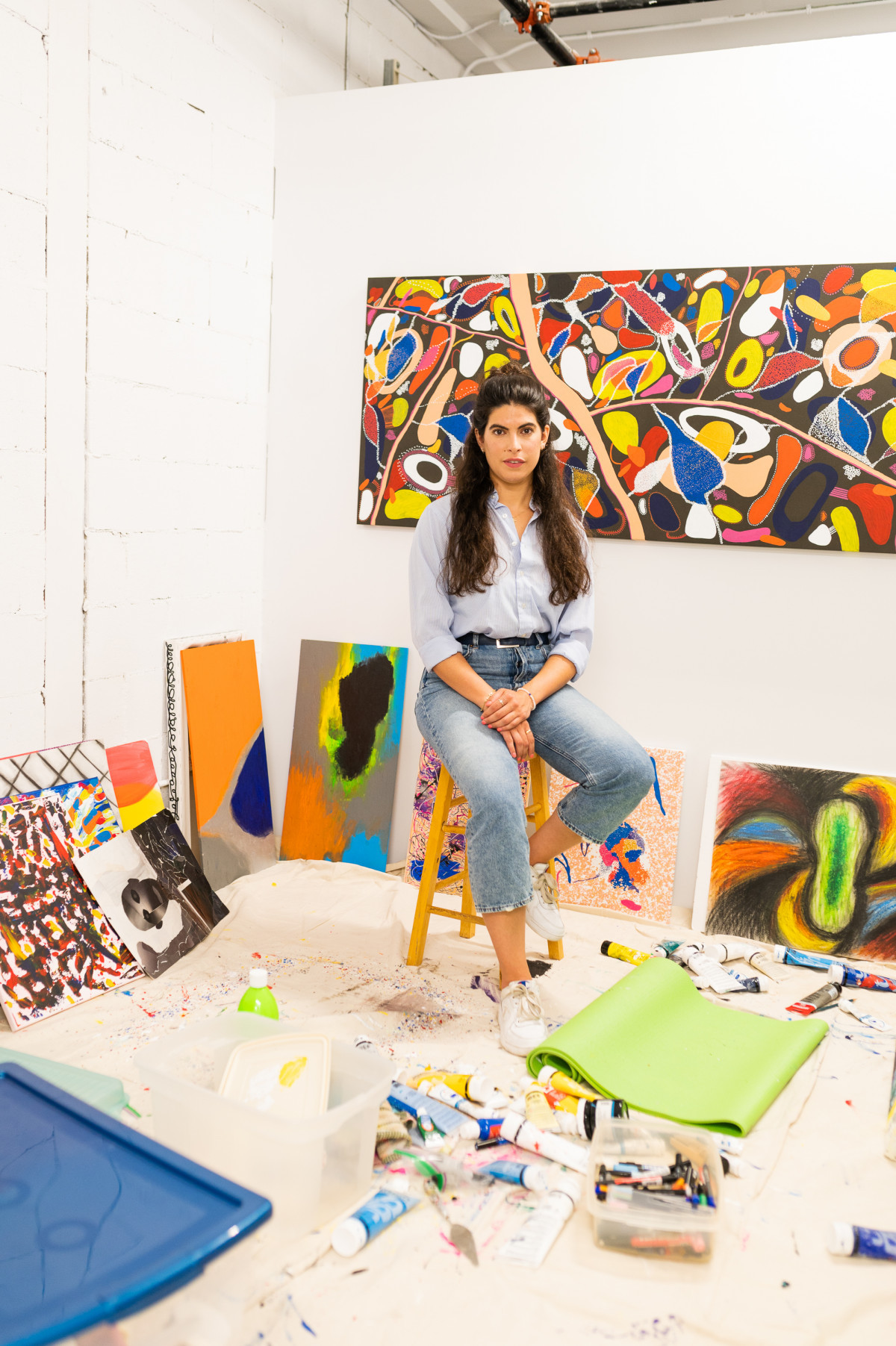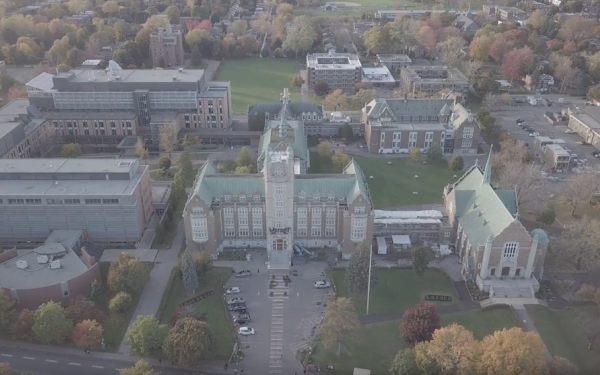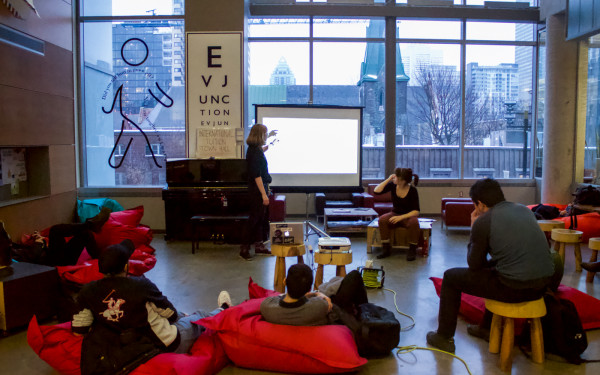How artists choose to monetize their work
Kate Picone in her art studio. Photo Asia Mason
An inside look on the value of experience and connections in the art industry
Pricing art is rarely an exact science. Usually, it comes down to reading the room and the relative success of an artist within their community.
For most artists, the price of an art piece is directly related to the experience of an established artist. “Your prices go higher as your CV gets a little better,” said multidisciplinary artist Sarah-Mecca Abdourahman.
Many emerging artists underprice their work in hopes of making a sale. However, this approach often changes after the realization that pricing is a reflection of more than the individual piece. Visual artist Marie-Danielle Duval said she doesn’t have many paintings in storage for that reason.
“I sold a lot of [paintings] too cheap, and I don’t regret that. But I’ve adjusted my prices [since then],” she said. “I think sometimes it's good to make [the price] higher and just wait for the right person.”
Once a price has been established, that becomes the starting point for pricing in the future. As an artist's name becomes more recognized, all previous works become more valuable. A steady climb in pricing will often be seen as an artist establishes themselves within their practice and builds their name.
Artists have to consider their reputation with their past clients in hopes that they’ll become collectors. “If you’ve already sold a piece that’s this size for $2,000, you can’t make a new one and sell it for $500 because your client will be like, ‘Well, why did I waste my money?’” said textile artist Sophia Borowska.
Particularly with prospective collectors, artists are creating what might become long-term relationships with clients. Out of respect for collectors, and at the risk of putting their reputations at stake, artists can’t go back on their prices.

Those outside the industry might view the prices as steep, but visual artist Kate Picone feels that buying art requires a level of mutual respect and acknowledgment. Creating visual art as a serious endeavor is expensive for any artist, but it’s about more than just paying the rent on time.
When a collector buys a piece from an artist, they’re investing in their craft. “[They] enjoy your artwork enough to financially compensate you for it [...] and they see the value in [your work] because what you’re bringing to your community is valuable,” said Picone.
Size is the most standardized way to distinguish prices from any given artist. For Borowska, an 8 by 12-inch image printed on cloth might run between $300 and $450, whereas something much larger could cost somewhere in the thousands.

For Duval, sizing is the most neutral way to establish the pricing process. “You cannot really justify the price just because you put [in] a few more hours or it’s your favourite,” she said.”
Picone, however, said that even with size as a factor, it can be an impossible task to quantify what your craft is worth.
Although Picone doesn’t make her living completely off of her paintings, the money she does get sustains her craft and builds her confidence. “Of course I want to be able to make more money and be financially successful in art,” she said, “but it’s [also] about all the things I want to talk about through art.”
“It’s not only [about] the time it took me to create one piece, but all the work that went into my artistic practice that I didn’t get paid for,” said Picone when asked what a price represents.
Another indirect factor of pricing can come from how the work is chosen for display. For Picone, the context of how pieces are shown is an important aspect of how the work is publicly received, ultimately affecting the price.
“[Having spaces] that display [the work] in the way that I want them to be experienced by others is a really important factor,” she said. Spaces that allow that level of control are usually galleries that help establish an artist’s name and, in the end, elevate their worth.
Artists must also consider if a gallery is taking a percentage of their sales. It is not unusual to see an increase in price so the artist is still making a respectable amount of money after the gallery takes their cut. The flip side of this extra fee is the benefit of being in a space that complements the artwork.
Picone thinks a good gallery encourages conversation, letting buyers learn about the backstory of each piece, which for her, enriches the exchange.
“Here’s my work, here’s an understanding of why I’m even doing this, and the reasoning behind what I create,” she said regarding the backstories behind art pieces.
“It’s not only [about] the time it took me to create one piece, but all the work that went into my artistic practice that I didn’t get paid for.” — Kate Picone
Selling art in a group context can also influence pricing. In Picone’s earlier experiences with group shows, not knowing her peers put her at a disadvantage in recognizing where she fit in. “There’s so many things you don’t know about the other artists, so you don’t know why they’re pricing their things at a certain level,” she explained.
Collaboration within the arts community influences artists’ prices. “People were a little mad at me [because] there’s people who put their work for $3,500, and then I make them look bad because mine [...] were like $1,000,” said Montreal painter Chloé Gagnon.
Going forward, while Picone does plan to be aware of pricing trends from her peers, she will ultimately use her own development as an artist as a reference point. “When I first started [pricing], I was completely winging it. I had no idea, so at least now there’s a bracket that I can stay [in] that I know I can’t go under.”
For Picone, creating art isn’t about the money. “I paint because I have something to say and I wanna share that,” she said.




_600_375_90_s_c1.jpg)